Artwork by Melissa Horn at Vintage Noir Galleries & Designs 2024
Over the last few decades a Second Quantum Revolution has brought about the prototype development of Quantum Computers (QC) which are supercomputers that are expected to revolutionize computing, analysis, and complex problem solving. QC has a different architecture, instead of silicon based processors it uses superconductivity circuits and trapped atomic ions. Quantum computers use the principles of quantum mechanical phenomena at the atomic and subatomic level to tackle extremely difficult tasks that ordinary computers cannot perform. QC use quantum bits, or qubits, that are the basic unit of memory that use an orientation of a photon of light or the rotation of an electron.
Use of Quantum Superposition: two or more quantum particles or states are superimposed on each other. Superimposed particle combinations can be in all possible states and positions simultaneously. This allows performing multiple tasks at the same time.
Use of Quantum Entanglement: particles correlate and interact with each other, acting the same simultaneously at a distance, to perform computing. Qubits can interact at a distance.

Theoretical Potential vs. Current Capabilities
Quantum computing could revolutionize many fields by performing certain calculations much faster than classical computers. These calculations include large number factoring, complex molecular modeling, solving optimization problems relevant in particle physics, forecasting, logistics, cybersecurity, and artificial intelligence. As for what quantum computing does in its current state, it’s more limited. Today’s quantum computers are in the early stages of development, often referred to as NISQ devices.
They have a small number of qubits and are prone to errors, this limits their practical use. Quantum computing harnesses quantum mechanical phenomena, which allows it to perform certain types of calculations much faster than classical computers. For example, it could factor large numbers exponentially faster than classical computers, impacting fields like cryptography. These capabilities aren’t about just adding more digits to the binary system, they’re about leveraging the fundamentally different behavior of particles at a quantum level. While it’s theoretically possible to consider different numeric systems for computing the revolutionary aspect of quantum computing comes from its ability to exploit quantum mechanics, offering capabilities that extend far beyond simply adding more digits to the binary system. This represents a fundamental shift in how information is processed and manipulated, opening up new possibilities that are not achievable with merely an extension of the current binary system.
The scalability of quantum computers is a significant challenge. Increasing the number of qubits is not just a matter of adding more of them, it also involves maintaining their stability, coherence and managing error rates, which increase with more qubits. Current quantum computers can perform certain specific tasks that demonstrate quantum supremacy, a term used to describe a quantum computer solving a problem that a classical computer cannot solve feasibly. However, these tasks are often not practically useful outside of demonstrating this capability.

The Schrödinger analogy is apt because, like the famous thought experiment, quantum computing currently exists in a state of both immense potential and practical limitation. It’s poised to unlock significant breakthroughs but is simultaneously hampered by technological hurdles that need to be overcome. Many of the more exciting applications of quantum computing remain theoretical, awaiting advancements in quantum technology. Researchers are working on improving qubit stability, coherence times, and error correction, which are vital for realizing the full potential of quantum computing.
Atomic computing refers to a form of computing that uses atoms or atomic-scale structures to perform computational tasks. This is essentially what quantum computers do, using properties of quantum mechanics like superposition and entanglement at the atomic or subatomic level.
The motivation for developing atomic or quantum computers lies in their potential to solve certain types of problems much more efficiently than classical computers. This includes complex simulations, optimization problems, and potentially creating new types of secure communication systems. While quantum computing holds incredible potential and could lead to groundbreaking changes in various fields, its current state is more limited and experimental. The journey from could to does in quantum computing is an ongoing process of technological advancement and discovery. The concept of an atomic computer capable of facilitating something like teleportation internet is an intriguing blend of advanced theoretical physics and futuristic technology. I will break down the ideas and potential motivations behind such technologies.

Artwork by Melissa Horn at Vintage Noir Galleries & Designs 2024
Quantum Teleportation
Like for example, quantum teleportation, which is a phenomenon where the state of a quantum system like a qubit, is transferred from one location to another, without physical movement of the object itself. This is not teleportation in the science-fiction sense, it’s about transferring information instantaneously. The concept of a teleportation internet likely refers to a quantum internet, where quantum teleportation is used to transmit information. Such a network would utilize the principles of quantum entanglement to enable secure and instant communication, potentially revolutionizing how data is transmitted. This new technology is very exciting, I am extremely interested in what quantum computers hold for us in the future.
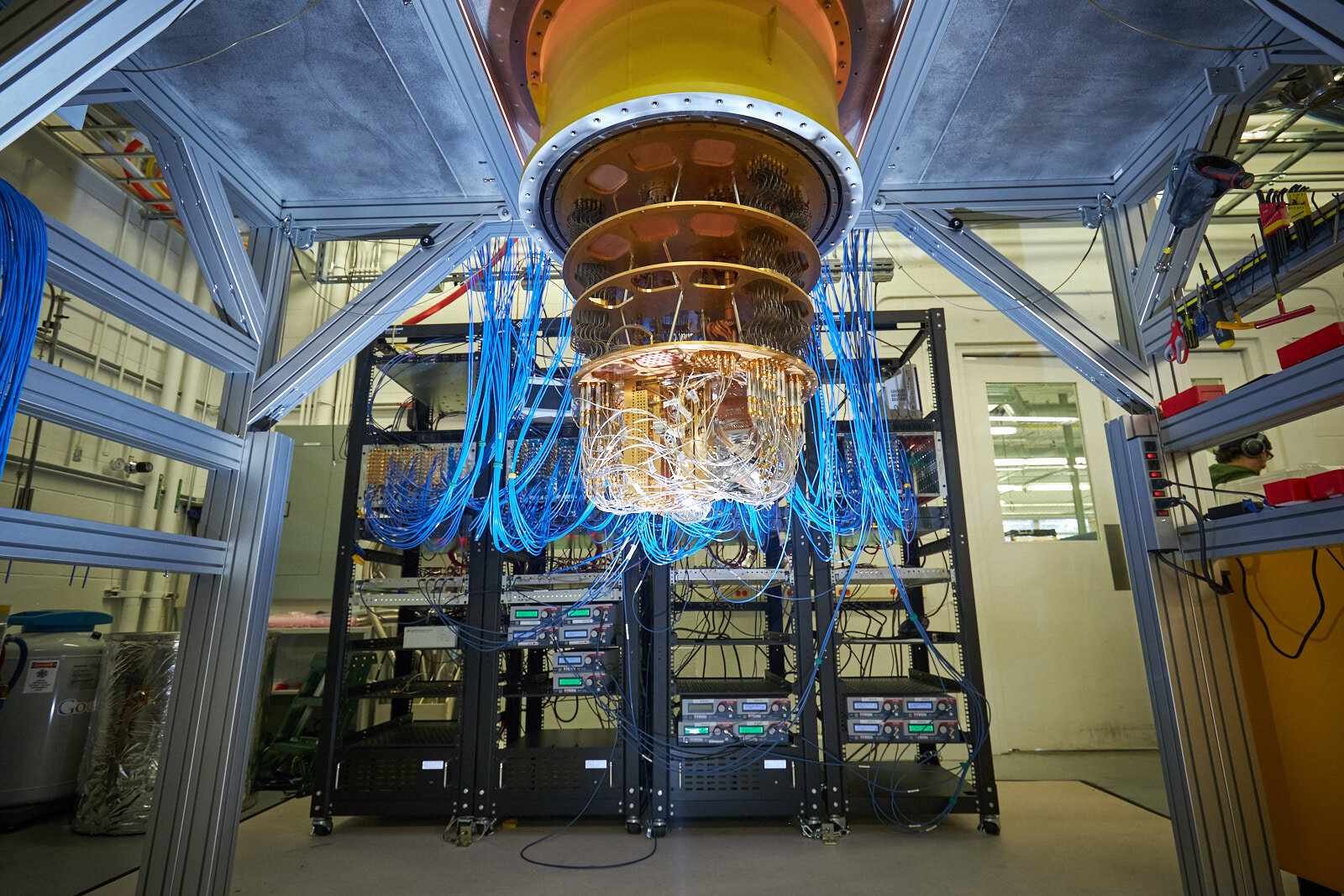
Atomic or quantum computers can vastly outperform classical computers in specific tasks, opening up new frontiers in research and technology. These technologies could enable new types of scientific experiments and discoveries, particularly in fields like physics, chemistry, and biology. Exploring these cutting-edge technologies often lead to unforeseen innovations and advancements in various fields. The feasibility of a fully functional quantum internet or highly efficient atomic computers is still a topic of ongoing research and development.
The computing and a quantum or teleportation internet is driven by the promise of vastly improved computational capabilities, secure communication, and the potential for scientific and technological breakthroughs.
Containment of Atomic Particles or Qubits
Qubits can be made from various types of particles or systems, including photons, electrons, atoms, or even superconducting circuits. The choice depends on the quantum computing approach. The energy required for quantum computers varies depending on the type and scale of the quantum computer. Superconducting quantum computers, for example, require dilution refrigerators to achieve the extremely low temperatures necessary for operation. The energy cost here is primarily for cooling. The actual computational process in quantum computers is not particularly energy intensive compared to the energy required for maintaining operational conditions like temperature and isolation from external disturbances.
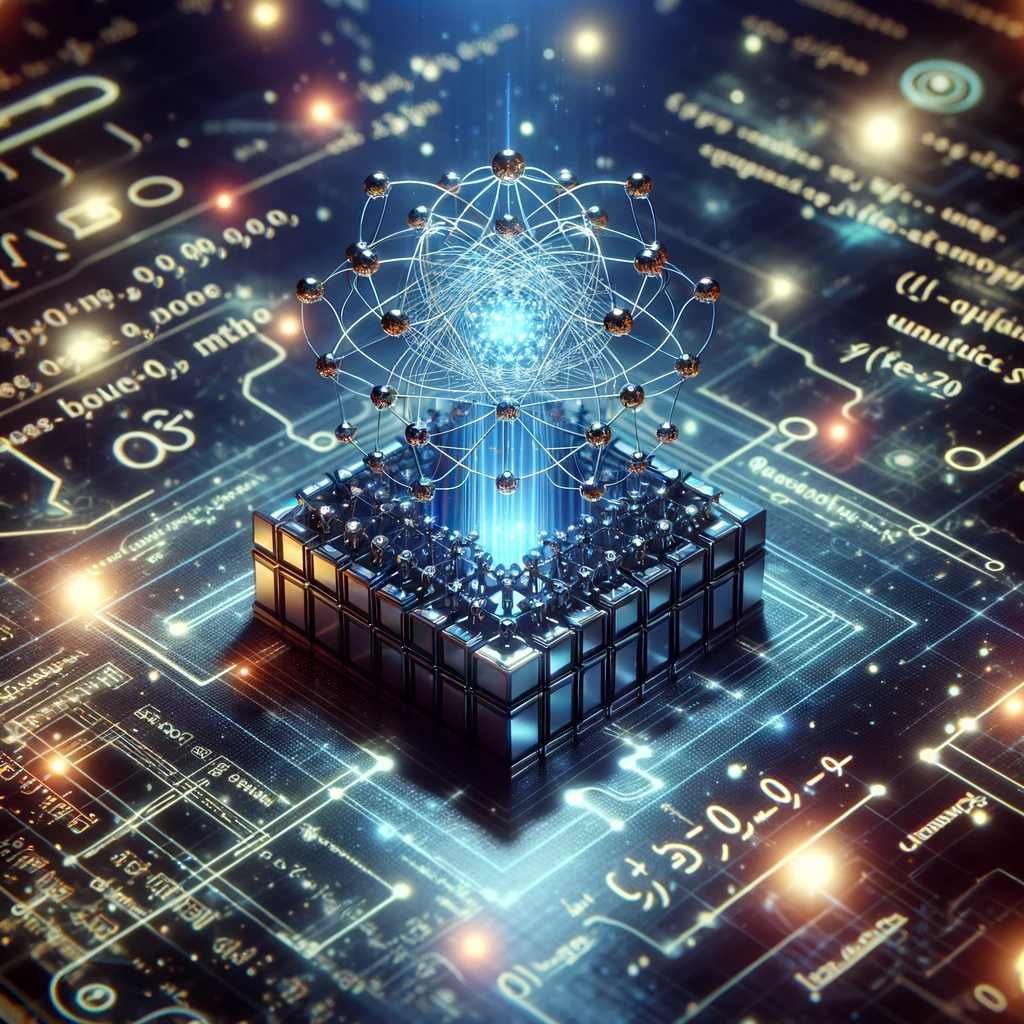
Cooling Requirements
Many quantum computers, especially those based on superconducting qubits, require cooling to near absolute zero temperatures. This is necessary to minimize noise and interference from thermal energy, which can disrupt the delicate quantum states of the qubits. The cooling is achieved using dilution refrigerators, sophisticated pieces of equipment that are energy-intensive. These refrigerators are crucial for maintaining the operational environment necessary for the qubits to function correctly.
Quantum computers also require shielding from external electromagnetic fields and vibrations, as these can cause decoherence in the qubits, essentially disturbing their quantum state and leading to errors in computation. The containment systems, therefore, not only have to physically house the quantum computer but also protect it from any external interference, which adds to the complexity and energy requirements of the system.

Artwork by Melissa Horn at Vintage Noir Galleries & Designs 2024
Energy Consumption
While the quantum computation itself might not consume enormous amounts of energy, maintaining the operational environment for quantum computing, like cooling and shielding where the significant energy demands come into play. The total energy consumption would depend on the scale of the quantum computer, the type of qubits used, and the efficiency of the cooling and shielding technologies.
Quantum Computers in Space
The concept of using space as a venue for quantum computing is indeed being explored. Space offers a naturally cold environment, which can be beneficial for cooling. However, this doesn’t eliminate all energy concerns, as the system still requires power for operation and communication. Placing quantum computers in space introduces other challenges, such as the need for radiation shielding, and the complexities involved in operating and maintaining a device remotely in space.
As of now, quantum computers are large, complex, and energy-intensive, largely confined to research labs and specialized facilities. Future advancements might lead to more energy efficient designs, particularly as the technology matures and as new methods of qubit design and containment are developed. This could potentially reduce the overall energy requirements and make quantum computers more feasible for broader applications. Quantum computers currently require significant energy for cooling and shielding, ongoing research and technological advancements may lead to more efficient and practical solutions in the future.

Electrical Power
Quantum computers, like classical computers, are powered by electrical energy. This energy is primarily used not for the computation itself, which consumes relatively little power, but for maintaining the operational environment necessary for the quantum computer to function correctly. This includes the power needed for cooling systems, control electronics, and other support systems.
One of the most power intensive aspects of a quantum computer is its cooling system. Quantum computers, especially those using superconducting qubits, need to be cooled to temperatures close to absolute zero (-273.15°C or -459.67°F). Quantum computers require sophisticated control electronics to manipulate and read out the state of qubits. These electronics often operate at room temperature and are connected to the qubits via specialized wiring that runs into the low-temperature environment. The control electronics themselves are powered by standard electrical power, similar to that used in classical computing systems.
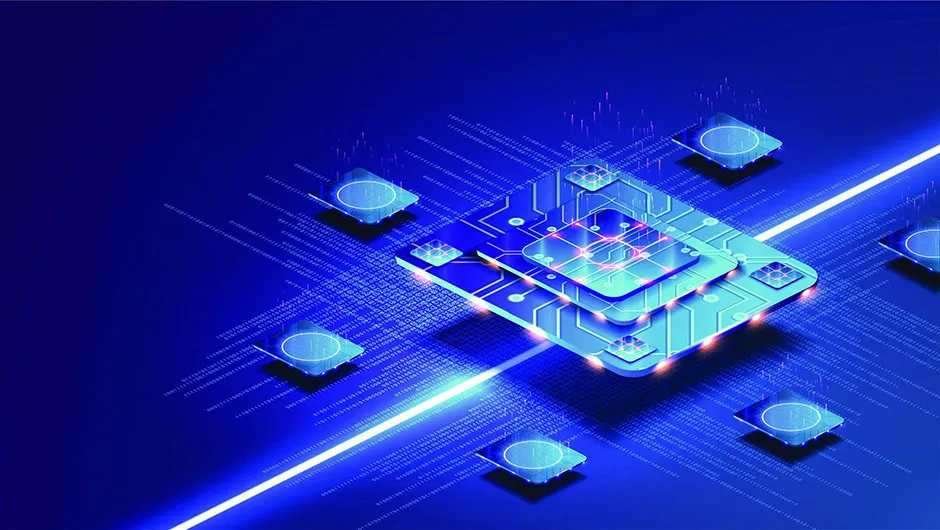
Quantum computers are powered using a combination of advanced technologies and specialized infrastructure, tailored to meet their unique operational requirements. Let’s break down the key components involved in powering and operating quantum computers. This cooling is achieved using dilution refrigerators, which are sophisticated and energy intensive.
These refrigerators use a mixture of helium 3 and helium 4 isotopes to achieve the extremely low temperatures required for superconducting qubits to operate. Additional power is needed for systems that shield the quantum computer from external electromagnetic interference and ensure that the qubits remain in a stable quantum state for as long as possible.
These systems help in maintaining the coherence of the qubits, which is essential for accurate quantum computation. Despite the high-power requirements for cooling and control systems, the quantum computation process itself is not necessarily high in power consumption. The efficiency of quantum computers can be quite high for certain specific tasks, although this is offset by the energy needed for supporting infrastructure. As quantum computing technology develops, there are ongoing efforts to make quantum computers more energy efficient.
This includes developing new types of qubits that can operate at higher temperatures, reducing cooling requirements, and improving the efficiency of control electronics. Quantum computers are powered by electrical energy, with significant power demands arising from the need to create and maintain an extremely controlled operational environment, particularly in terms of cooling. The technology is still in a developmental phase, and future innovations could lead to more energy-efficient quantum computing systems.
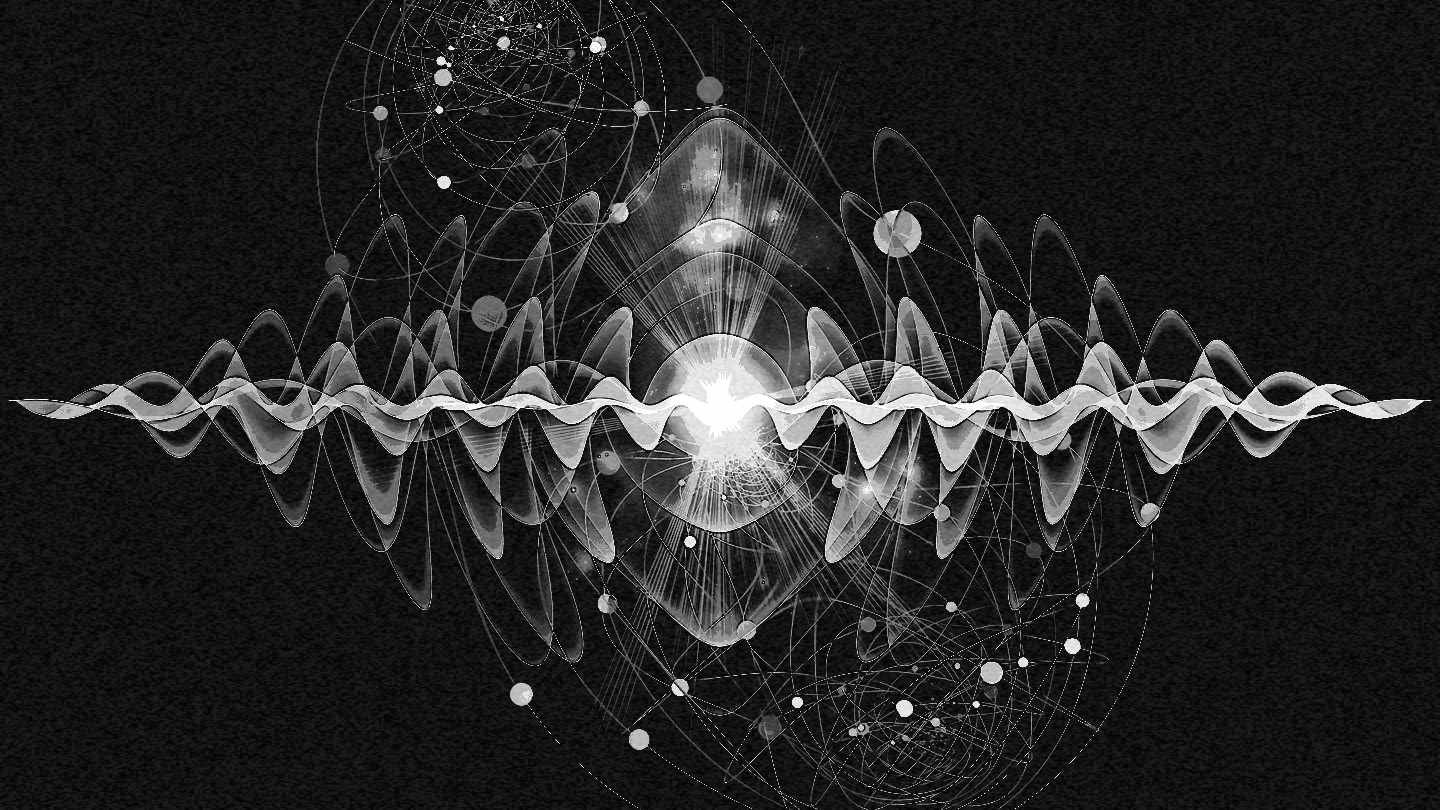
Artwork by Melissa Horn at Vintage Noir Galleries 2024
Theoretical models of quantum computing promise groundbreaking capabilities, such as solving complex mathematical problems much faster than classical computers, simulating molecular and quantum systems with unprecedented accuracy, and offering highly secure communications through quantum encryption.
These capabilities are based on the unique properties of quantum mechanics, like superposition and entanglement, where qubits can be in multiple states simultaneously and influence another regardless of distance. Present day quantum computers are in a relatively new stage. Known as Noisy Intermediate Scale Quantum (NISQ ) computers, they have a limited number of qubits and are prone to errors and instability. Current quantum computers have demonstrated quantum supremacy, for very specific problems, meaning they can perform certain calculations faster than the most powerful classical supercomputers. However, these problems are often not directly applicable to practical, real-world tasks. The practical applications of today’s quantum computers are still limited and are primarily used for research and development.
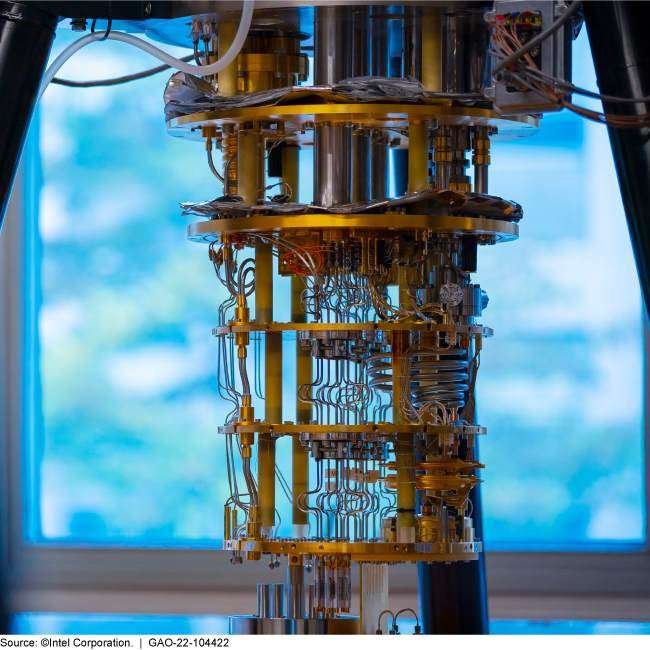
The Gap Between Theory and Practice
There is a significant gap between the theoretical potential of quantum computing and what can currently be achieved. This gap is due to numerous technical challenges, such as scaling up the number of qubits while maintaining their stability, improving error correction, and developing algorithms suitable for NISQ computers. Many of the more exciting applications of quantum computing remain theoretical or experimental and are contingent on overcoming these technical hurdles. The field of quantum computing is rapidly evolving, with ongoing research and development.
Advancements in technology could eventually bridge the gap between the theoretical potential and the practical capabilities of quantum computers. As technology improves, we can expect to see quantum computers becoming more stable, reliable, and capable, eventually fulfilling more of their theoretical promises. In conclusion, while the full promise of quantum computing has not yet been realized, the ongoing advancements in this field suggest that many of its theoretical capabilities could become realities in the future. However, it’s important to maintain a clear perspective on the current capabilities versus the future potential of quantum computing.

Moore’s Law, named after Gordon Moore one of the founders of Intel, it’s not so much a law as a dazzling prediction that has held true for an astonishingly long time. Back in 1965, Moore made an observation that would become the drumbeat of the digital revolution. The number of transistors on a microchip doubles about every two years, while the cost of computers is halved. It’s like predicting that every two years, your car will double in speed while halving in price.
This observation has implications far beyond just mere transistors. It’s about the acceleration of computing power, the miniaturization of technology, and the explosion of capability. It’s the reason your smartphone today is exponentially more powerful than the entire computing power that put man on the moon. But as with all good things, there’s a catch. We’re beginning to bump up against the physical limits of silicon-based technology. Transistors are now so small they’re flirting with the atomic scale, and at that level, things get weird and wonky thanks to quantum mechanics. It’s like trying to paint a masterpiece on a grain of rice.
Moore’s Law is more than just an observation about transistor counts, it’s a narrative that has defined half a century of technological advancement. It’s about human ingenuity, the relentless pursuit of the next breakthrough, and the insatiable drive to turn the impossible into the inevitable.
As we stand on the cusp of a new era in computing, Moore’s Law isn’t just a relic of the past, it’s a challenge to the future, a question mark hanging over the next big leap in technology. So, let’s tip our hats to Gordon Moore and get ready for the next twist in this thrilling ride of technological evolution.
Sources
“Large Quantitative Models”, Soundbox AQ.
“Quantum Computing”, Wikipedia.
“Quantum Computing: Definition, How Its Used, and Example”, Investopedia, April, 2024.
Quantum Computing & Information A Scaffolding Approach, Perry Y. Lee, Huiwen Ji, Ran Cheng, Polaris QCI, 2004.
“What Is Quantum Computing?”, Amazon Web Services.
“What Makes Quantum Computing So Hard to Explain, Scott Anderson, Quanta Magazine, June 8, 2021.
“The Wired Guide to Quantum Computing”, Tom Simonite, Sophia Chen, Wired Magazine February 22, 2023.



